Calf husbandry in Sweden – Part 1
8. August 2022 — Calf Feeding, Calf management, Practice report — #Colostrum #CalfTel #coloQuick #IglooSystem #Calf Health #MilkTaxi #Sweden #Dry TMR #GainsSweden is always worth a visit. But instead of hiking in the endless forests or fishing in the coastal waters, we more were interested in visiting Sweden's leading dairy cattle farms in order to take a look at the way they rear their calves. Accompanied by our partner Dan Rudelov from Gårdsby Igloo, we met interesting people and saw great calf husbandry systems. This article introduces the first four farms. In part two, we report on other exciting farm managers and clever solutions relating to calf management. Have fun reading!
This article is about
-
Danneborg Gård, Svalöv: MilkTaxi ensures operational reliability
-
Tyskagården, Laholm: From a temporary solution to a perfect calf barn
-
Logp Kvarngården, Falkenberg: Modern recycling of biogas substrate improves calf bedding
-
Carlsro Gård, Varberg: Healthy calves even with deep bedding thanks to fresh air
Danneborg Gård, Svalöv: MilkTaxi ensures operational reliability
Jan-Erik Bengtson is a calf and bull farmer on the Danneborg Gård farm in Svalöv. He buys in calves from 16 dairy farms. He fattens 1400 calves/bulls per year in three different weight categories.
He used to feed the calves at automatic feeders in a closed calf pen. There were always problems with the quality of the air, which led to respiratory problems in the calves. This was the reason why Jan-Erik switched to Pro II individual hutches and could soon see that his calves stayed much healthier
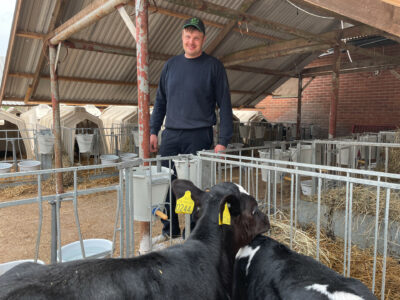
He has now switched to MilkTaxis for feeding as well following changes to his system. What he appreciates about MilkTaxi is the system's reliability and safety, which he sometimes missed in his previous calf feeders. It takes him about an hour to feed his 200 calves using two 260-litre MilkTaxis. It only takes 30 minutes longer when the calves first need to be trained. "And once I've finished feeding the calves, I can knock off. I never used to have that feeling with my old calf feeders," Jan-Erik remarks.
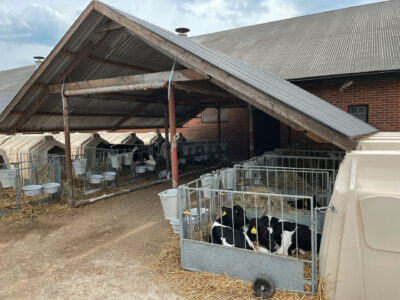
Each Calf-Tel Pro II hutch houses two calves. They are kept there for about 4 weeks and fed with 2 x 3 litres of CMR. They are then moved in groups to the former calf feeding shed, where Jan-Erik weans them when they are about 10 weeks old. They are then taken back to a pre-fattening pen before going to the final fattening pen.
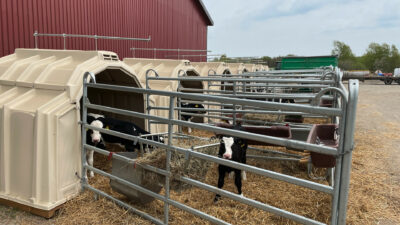
Jan-Erik has purchased an additional 10 MultiMax hutches to create even more space. It takes a little longer to train the calves here than in groups of two, but since the calves stay here throughout the entire milk phase, they don't need to be moved around as much and are therefore fitter and healthier.
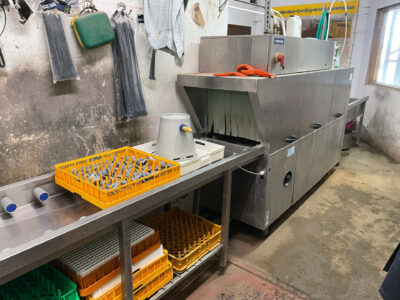
The heart of the operation: the bucket washing line
A real highlight on the farm is the bucket washing line, which Jan-Erik bought second-hand at an auction for about 1,200 euros. He uses it twice a week to clean 200 buckets, valves and suction cups and even the long plastic troughs in just one hour.
Tyskagården, Laholm: From a temporary solution to a perfect calf barn
Magdalena and Magnus Gustafsson have 360 dairy cows on Tyskagården farm in Laholm. They bought the farm 5 years ago and now run 2 farms. When they took over the farm, the Calf-Tel huts were scattered all over the farm and Magdalena was worried that she might forget calves. So the first thing they did was to concentrate all the hutches in one place. At that time, there were general problems with their calves' health, and there was always a shortage of calf pens.
Magdalena and Magnus therefore decided to purchase 10 Igloo Verandas, initially as a temporary measure, because there was no money for a new calf pen after they bought the farm. However, this "provisional solution" is now set to stay, because the calves are developing excellently in the verandas.
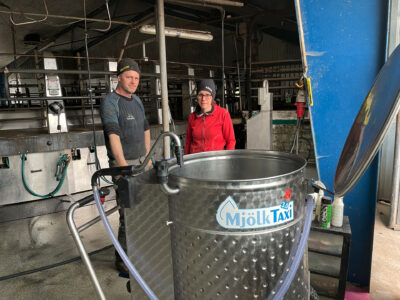
After birth, the calves are placed in a box next to the calving pen, where they are given colostrum using the ColoQuick system and, in winter, placed under a heat lamp. They are only taken outside to an individual hutch when they are able to drink well. This procedure has proven successful, as there is less work to be done with the Igloos and the employees looking after the boxes can take better care of the weak calves.
Magdalena and Magnus have created work processes that are as simple as possible, easy to understand and implement, because they have four foreign employees and communication is often difficult.
The cow shed has 4 different straw boxes for the cows, separated from each other by concrete walls to avoid contact:
- An area for sick cows,
- A wellness area for cows that have just calved,
- A calving box for heifers, and
- A calving box for cows.
One interesting aspect is that the quality of the colostrum has improved since the calving pens were separated, especially in the heifers. In the past, the number of feeding places was limited and the heifers were unable to consume the necessary quantities of basic feed.
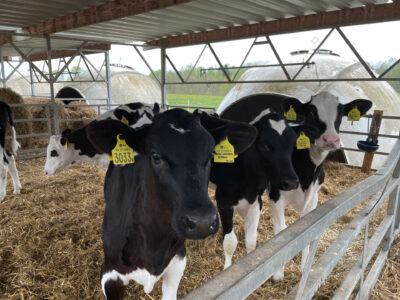
Small homogeneous groups of calves in the Igloo Veranda
The calves are kept in the individual hutches and fed whole milk for about five weeks. Afterwards, a maximum of 6 calves are housed in a group in an Igloo Veranda. The calves in this size group are more homogeneous in age and size and they develop better. It is then also possible for them to stay in the Igloo for up to three months without any problems.
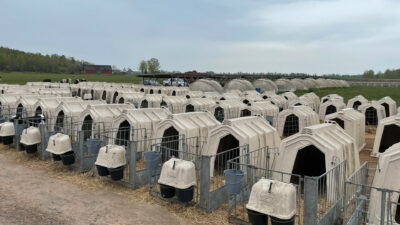
Feeding takes place three times a day with 2.5 to 3 litres per feed. This means that each calf is given up to 9 litres of milk a day. They are also fed a dry milk replacer containing sugar beet pulp, molasses, a concentrate mixture and chopped barley straw.
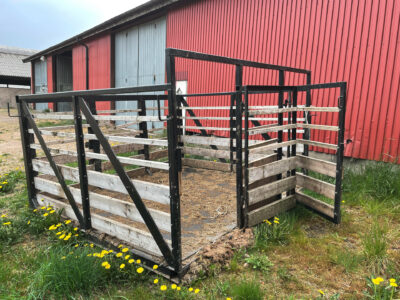
The weaned calves in the young cattle barn also receive this mixture in the first few weeks, together with the dry milk replacer for high-performance cows.
Magnus had a large transport box with two doors built for moving the calves around. He can mount it on the front loader attachment of his tractor and simply use it to transport the calves across the farm to the young cattle barn.
Logp Kvarngården, Falkenberg: Modern recycling of biogas substrate improves calf bedding
The Logp Kvarngården farm in Falkenberg has 400 dairy cows. They used to put the Calf-Tel Deluxe hutches out in the open and then give the feed through the feed flap on the side. This was very labour-intensive, however, because two/three extra steps always had to be taken next to each hutch, says Martin Paulson, one of the farm's partners. Located directly on the Baltic Sea, the location is subject to constant wind and not infrequent storms.
Consequently, all the hutches are now housed under one big roof, which affords the calves greater protection. This was clearly evident from the fact that the calves were all lying in the fresh air outside their hutch when we visited.
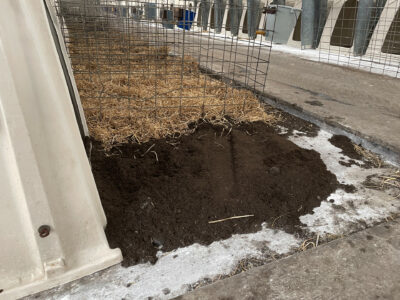
The calves stay in the individual hutches for about 2 months. The hutches are subsequently cleaned. After cleaning, the concrete floor is disinfected with lime. There is a layer of dried biogas substrate that has been sterilised at 70 °C beneath the actual straw bedding. This is mixed with straw chaff and used as bedding throughout the farm. It is extremely absorbent and keeps the straw, which is then placed on top, drier for longer.
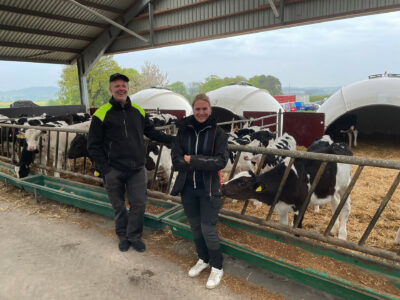
Calf dry milk replacer as a service from neighbours
Calves continue to receive transit milk and whole milk for about 2 weeks after the first colostrum feed directly after birth. They are then fed CMR without skimmed milk (2 × 4 l daily). Herd manager Caroline Carlsson would like to see even better growth rates. She is therefore considering feeding whole milk for longer or switching to a CMR with skimmed milk content.
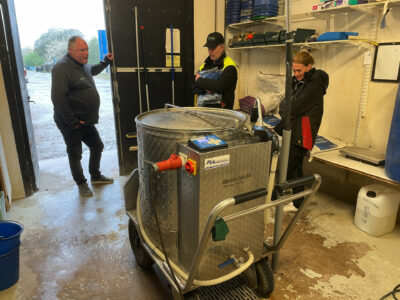
A calf dry milk replacer is fed in this case as well. However, because they don't have a suitable feed mixer on the farm, a neighbour mixes the DMR for them and brings it over every 2 weeks.
The spacious milk parlour has plenty of room for the MilkTaxi and all the other equipment needed for calf feeding.
Carlsro Gård, Varberg: Healthy calves even with deep bedding thanks to fresh air
Magnus Karlsson built his Igloo System barn with a double row of 8 H&L Igloos in total and many individual hutches 10 years ago.
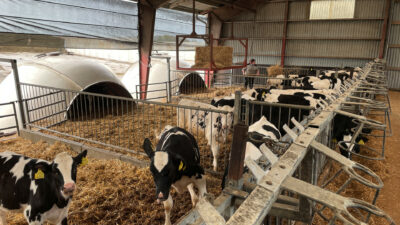
The igloos are not mucked out for 3 months (!). Nevertheless, the quality of air in the barn was very good and there were few problems with coughing. The calves also looked very well and clean. This is also due to the fact that Magnus has installed a suspended transport platform that can be used to transport a complete big bale through the barn directly over the straw pen. This makes spreading the bedding very easy and quick.
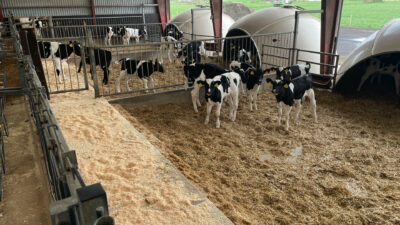
The large steps that the calves have to negotiate to reach the feeding table seem problematic. Interestingly, however, it is more difficult for the calves to get down than to get up. However, there are no more limitations for the calves after about 1 week.
After 10 years, the barn is today too small. The next step will see the barn being extended. The extension to the barn will create space for the individual hutches at the back, while another 5-6 group pens with H&L Igloos will be added under the existing roof.
The aim is for the calves to stay in this barn until they are 3 months old, because their health is very good here and they can then move on to further young cattle rearing in a stable manner.
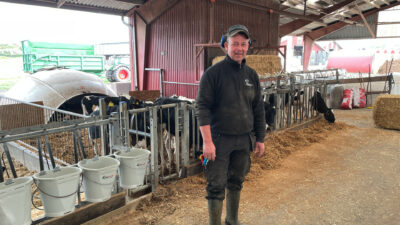
Responsibility in a single hand
Magnus Karlsson has delegated the responsibility for caring for the calves to an employee, who looks after the calves in the mornings from 6 a.m. to midday and does all the chores. In the afternoon, another person from the team simply handles the supply of milk with the MilkTaxi.
The calves are given whole milk in their individual hutches. After two weeks, they are transferred to the group igloos, where they continue to be fed with CMR. They are given 3.5-4 litres twice a day. The calves are then weaned off milk when they are 10-11 weeks old.
During our visit, the dry DMR mixture on the farm indicated a slightly too long chop length with the straw mixed in (approx. 6-8 cm). And you could already clearly see that the calves were starting to choose their food.

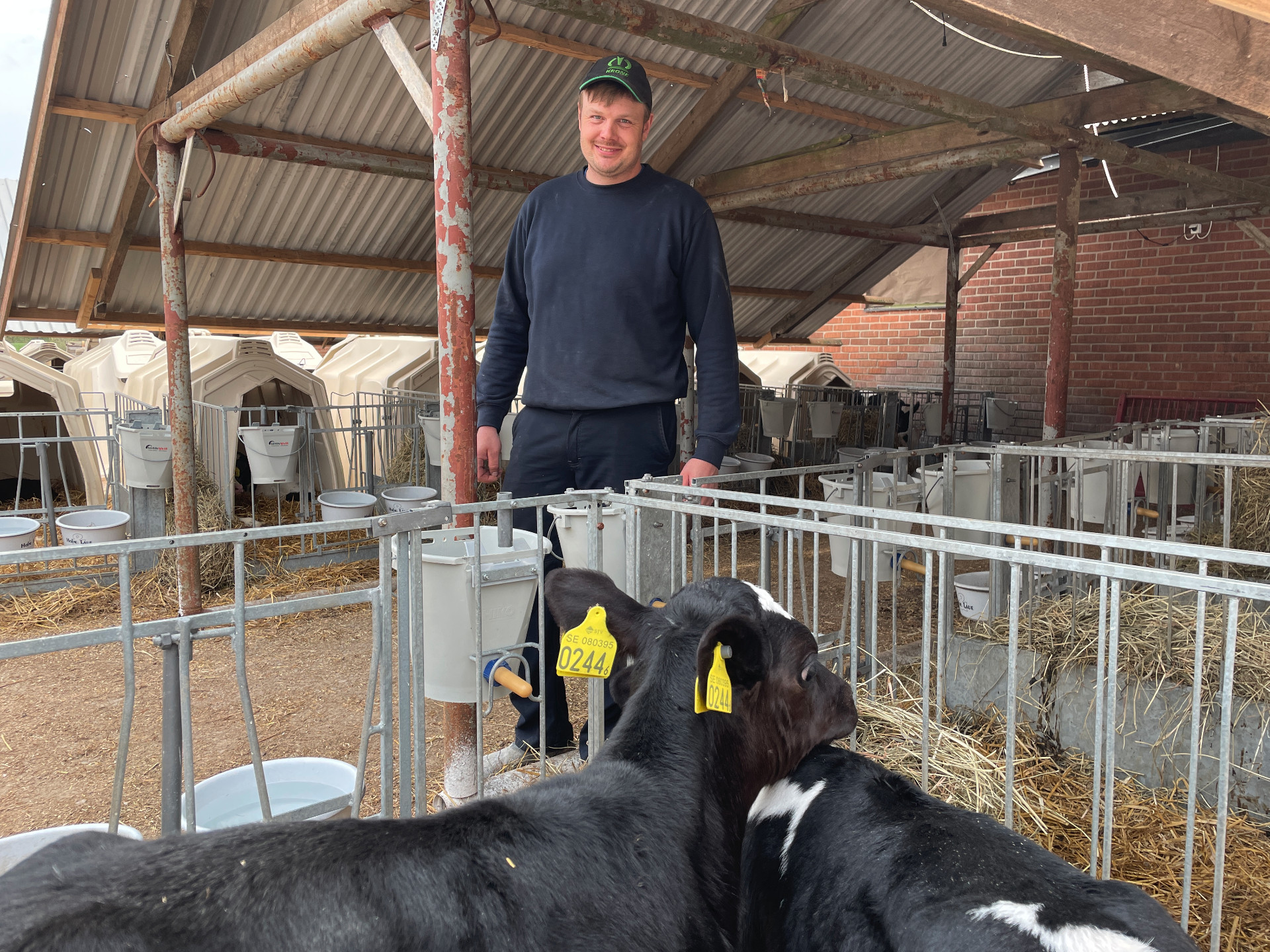 Jan-Erik Bengtson
Jan-Erik Bengtson
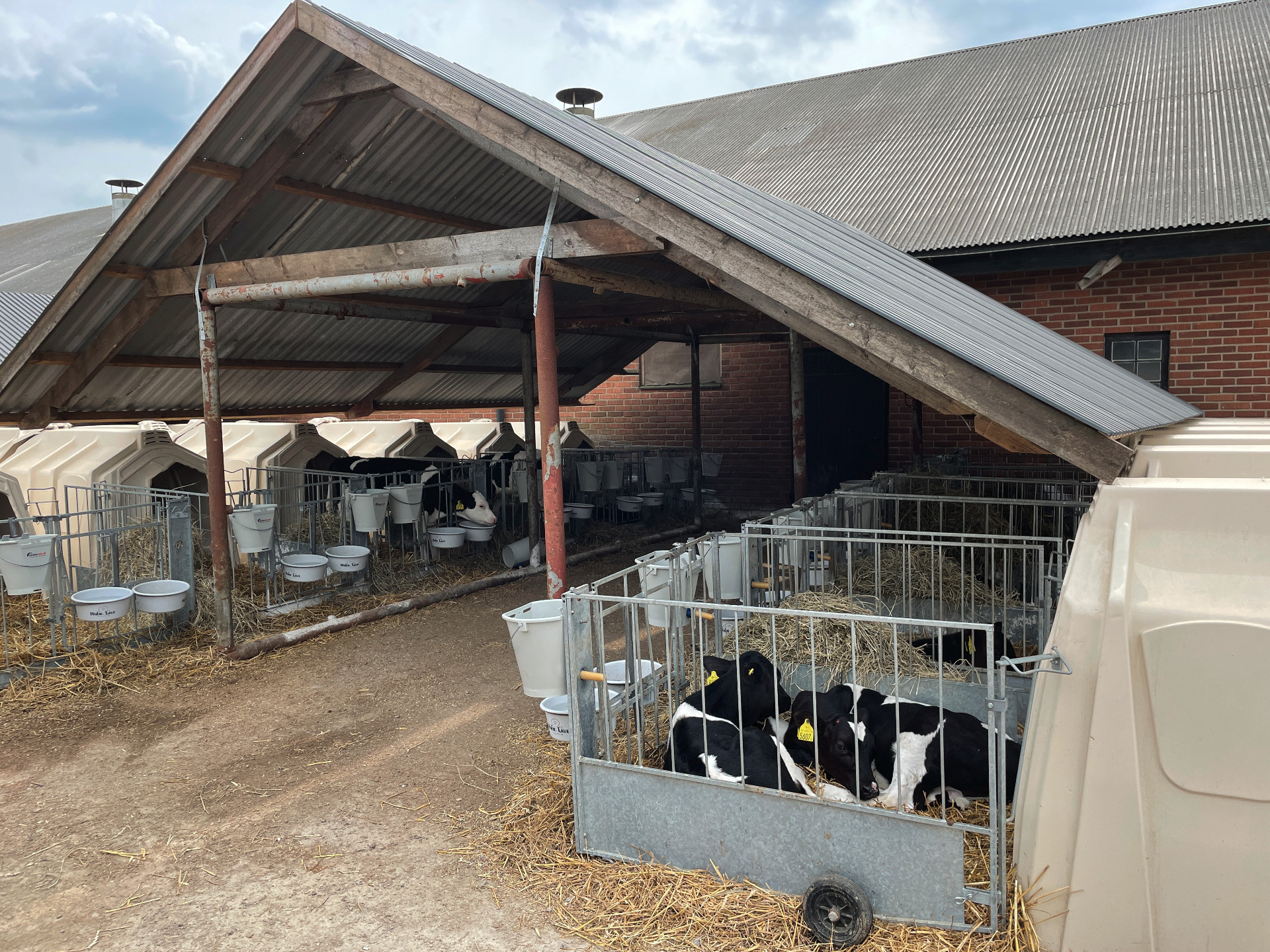
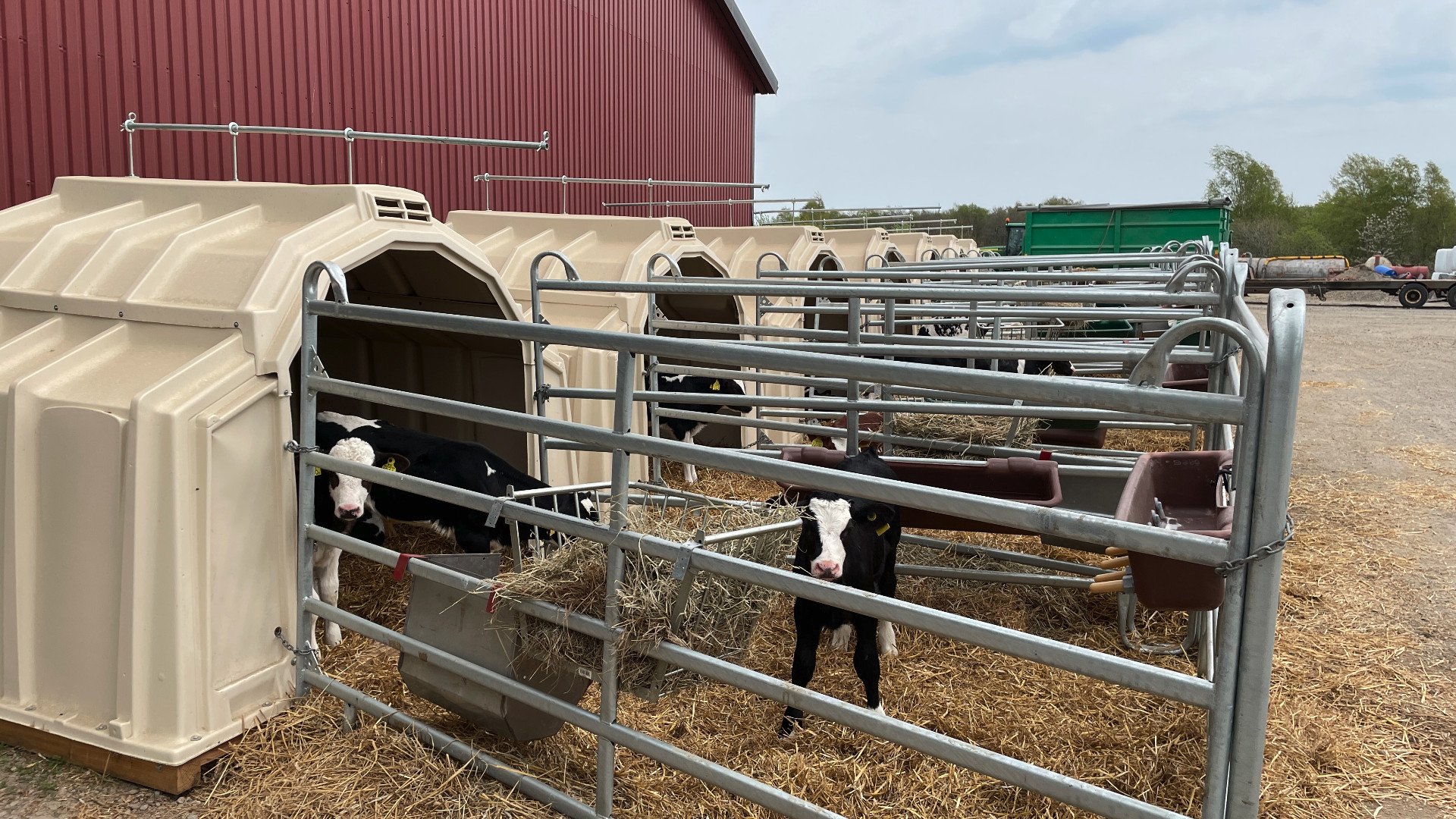
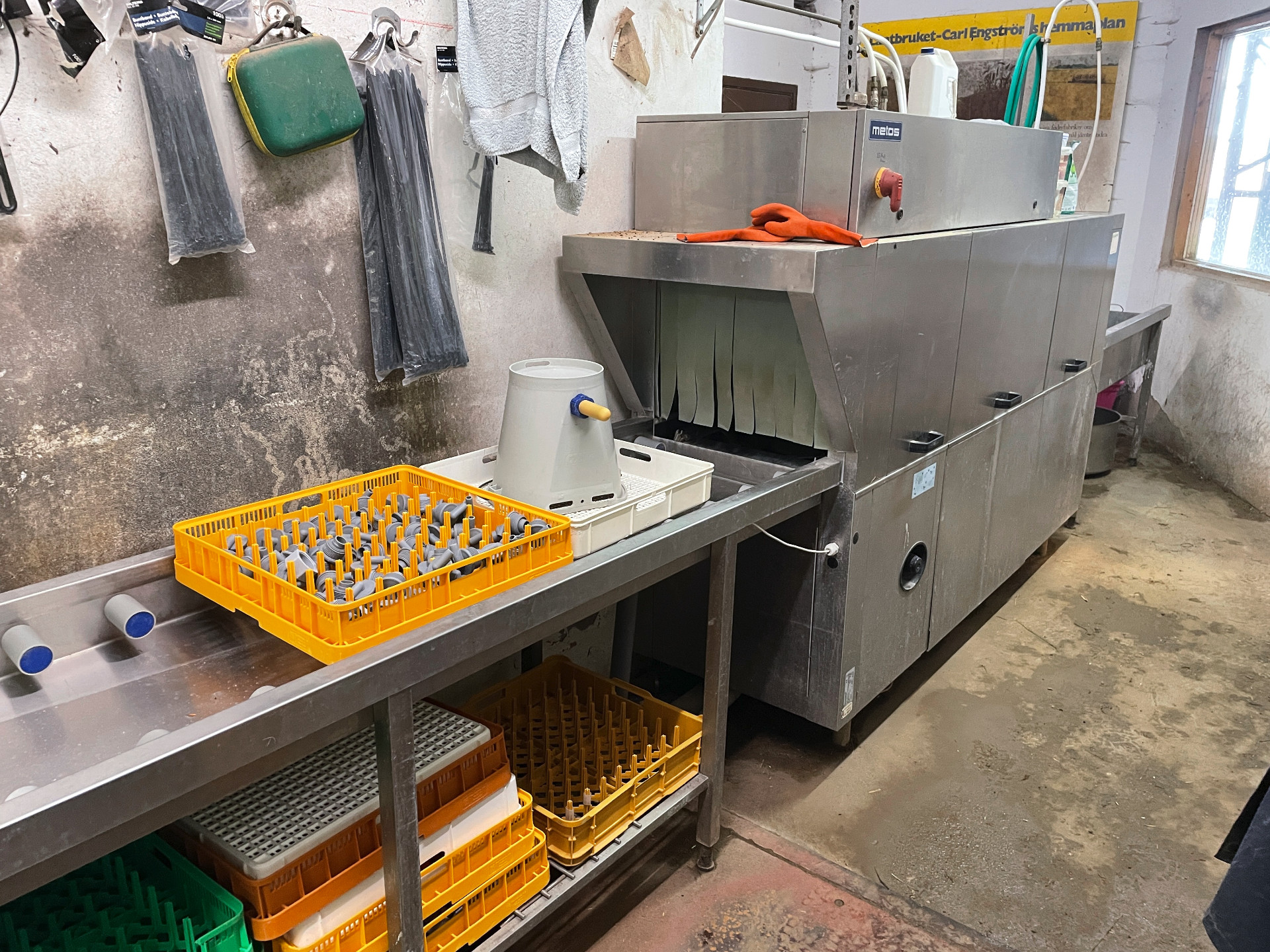
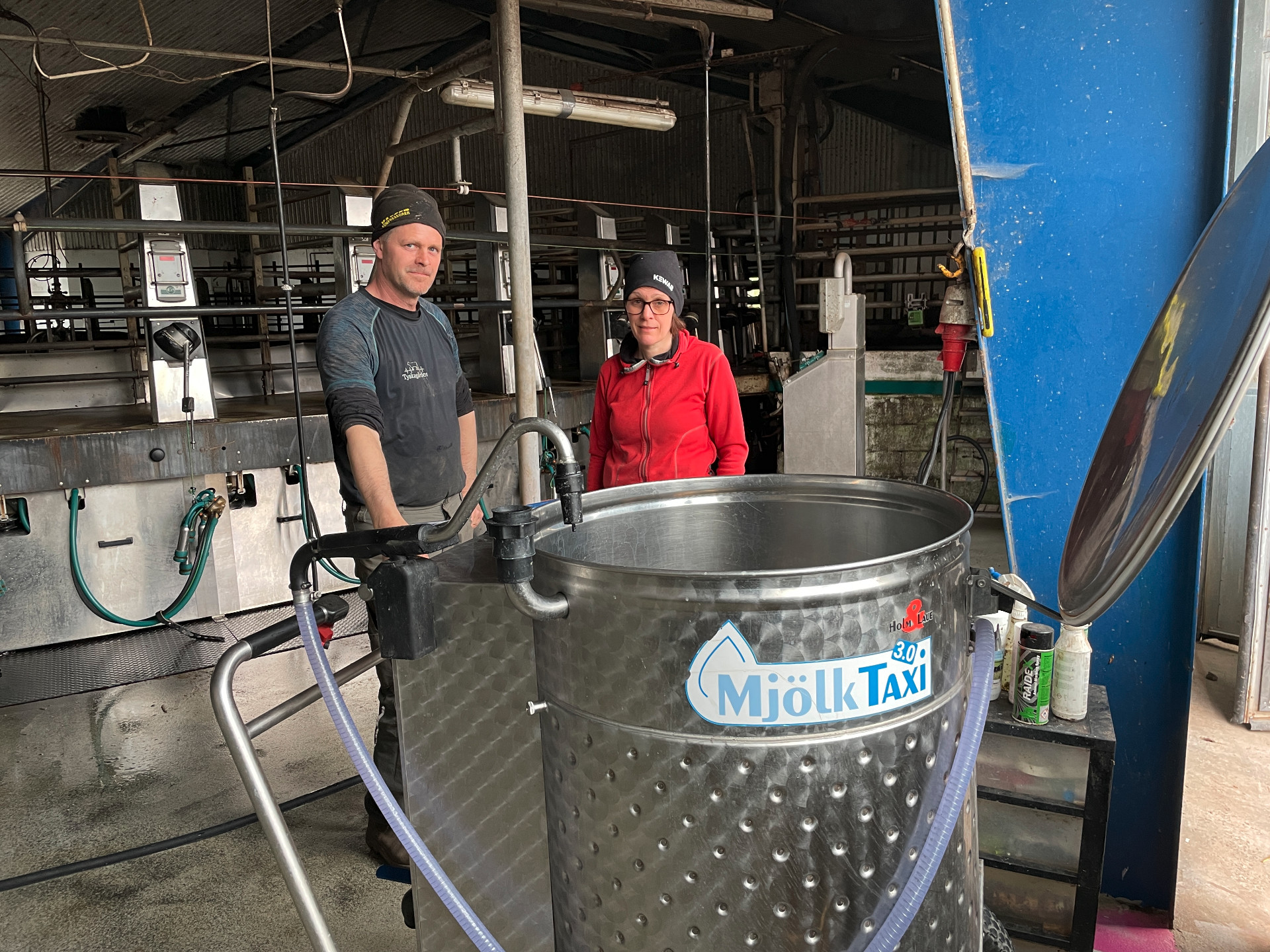 Magnus and Magdalena Gustafsson
Magnus and Magdalena Gustafsson
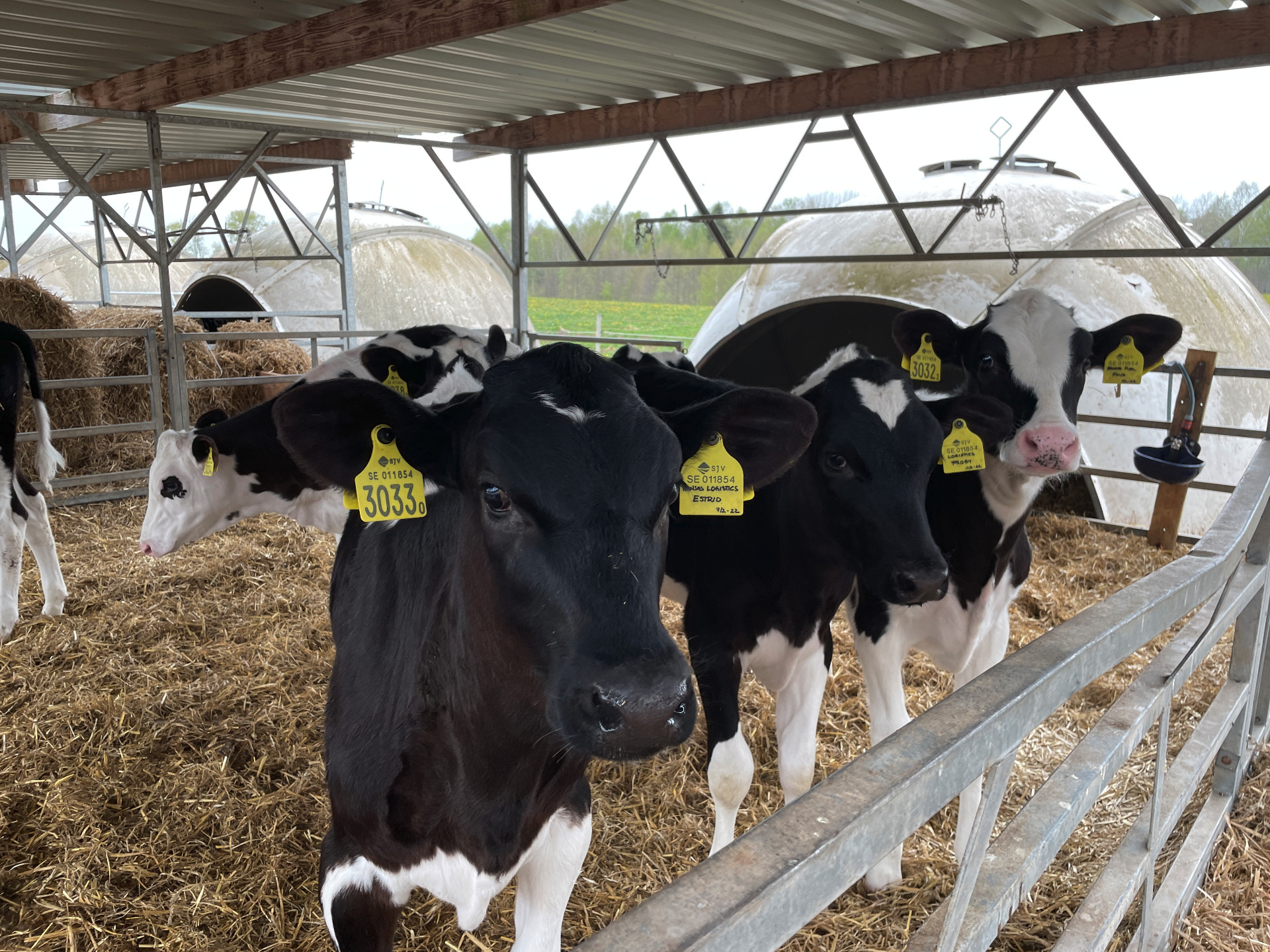
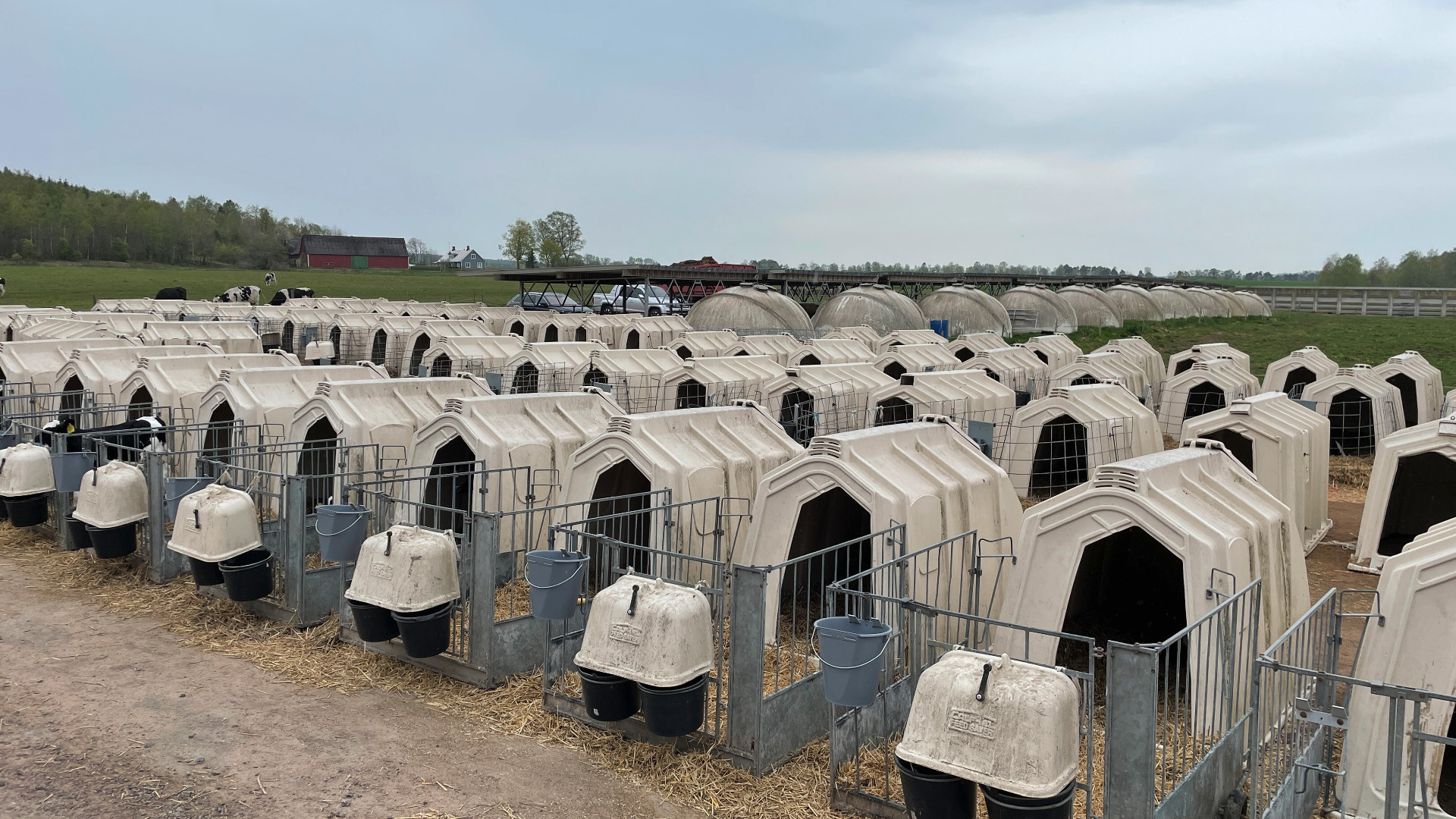
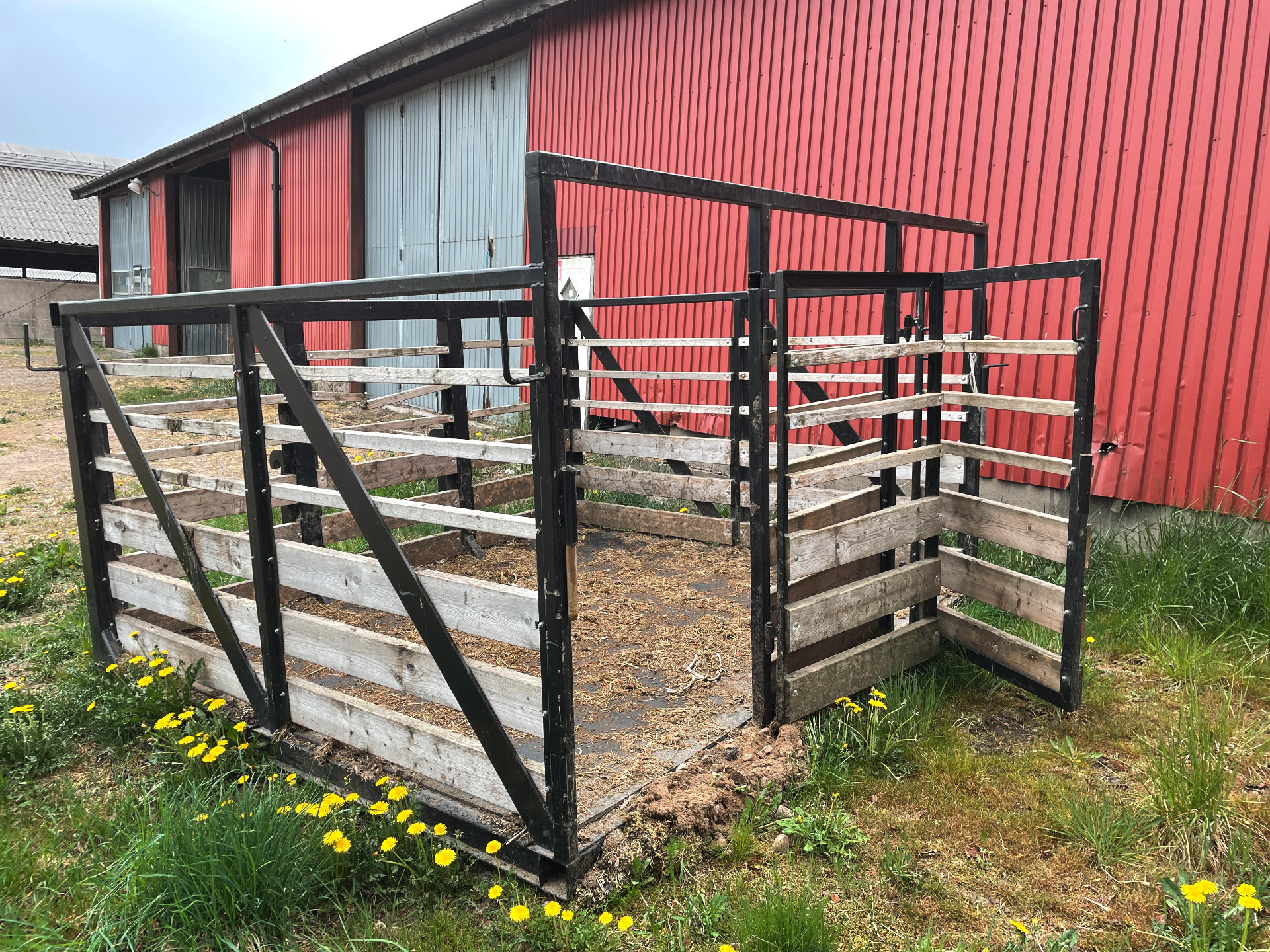
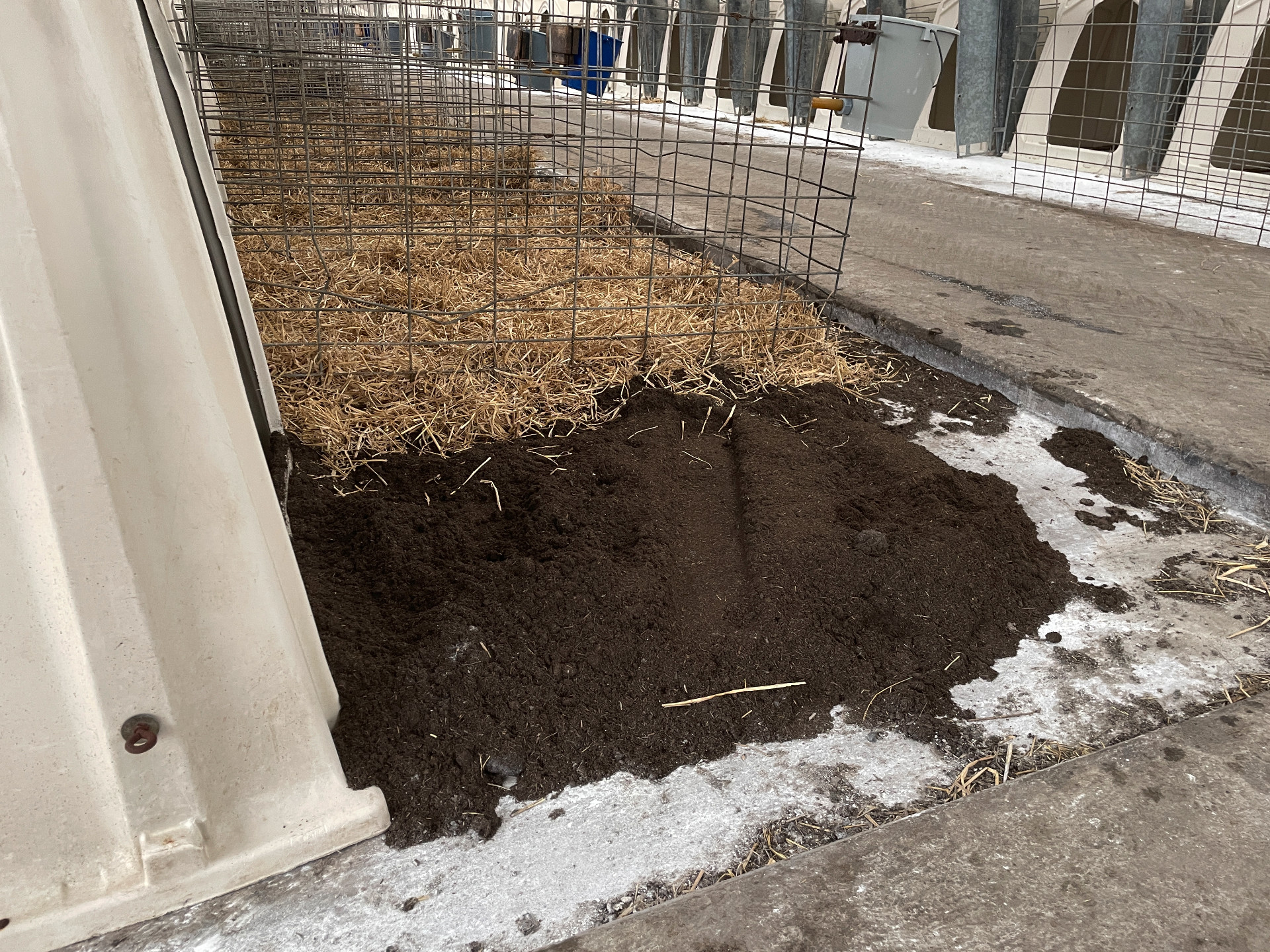
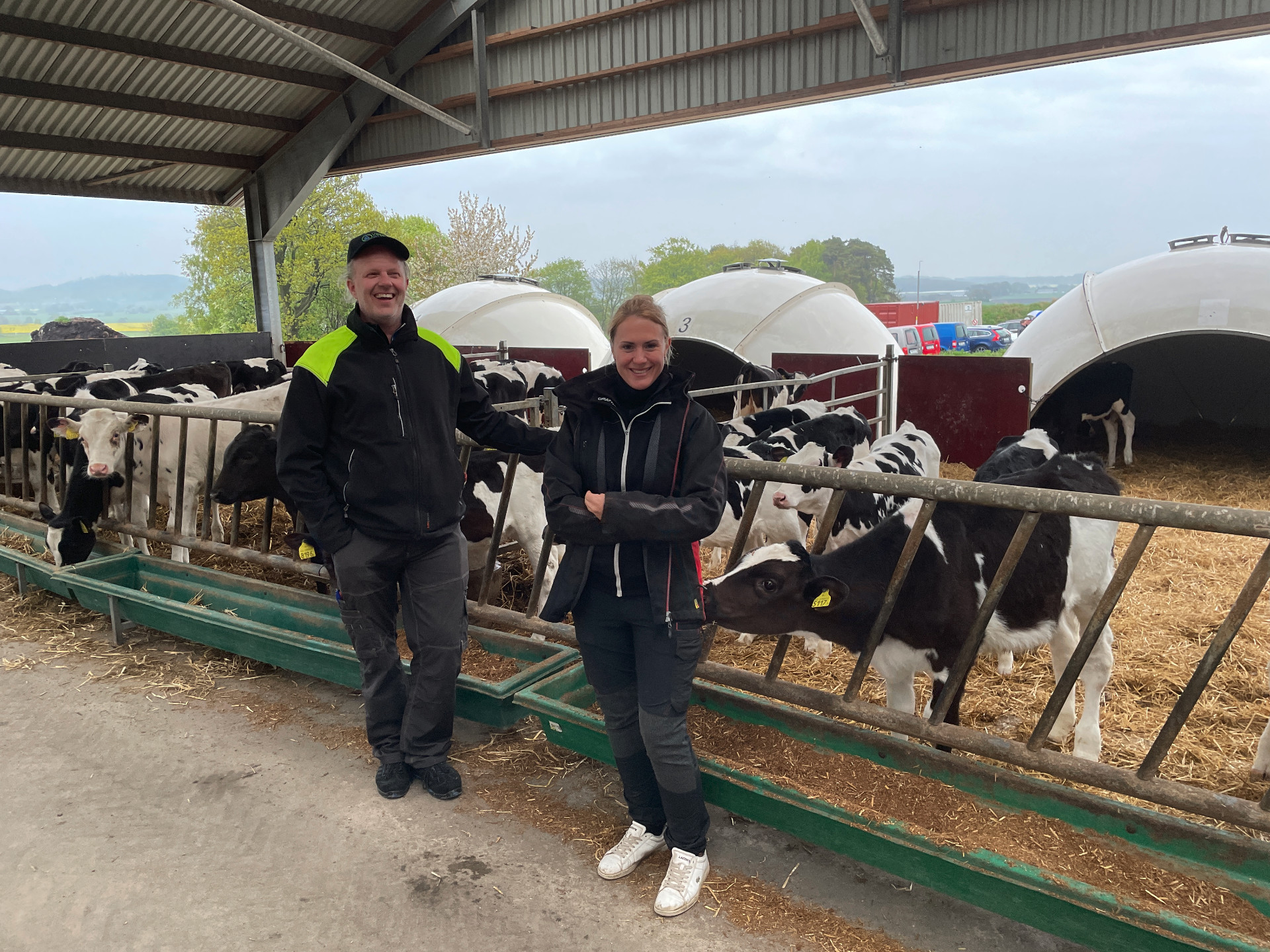 Martin Paulson and Caroline Carlsson
Martin Paulson and Caroline Carlsson
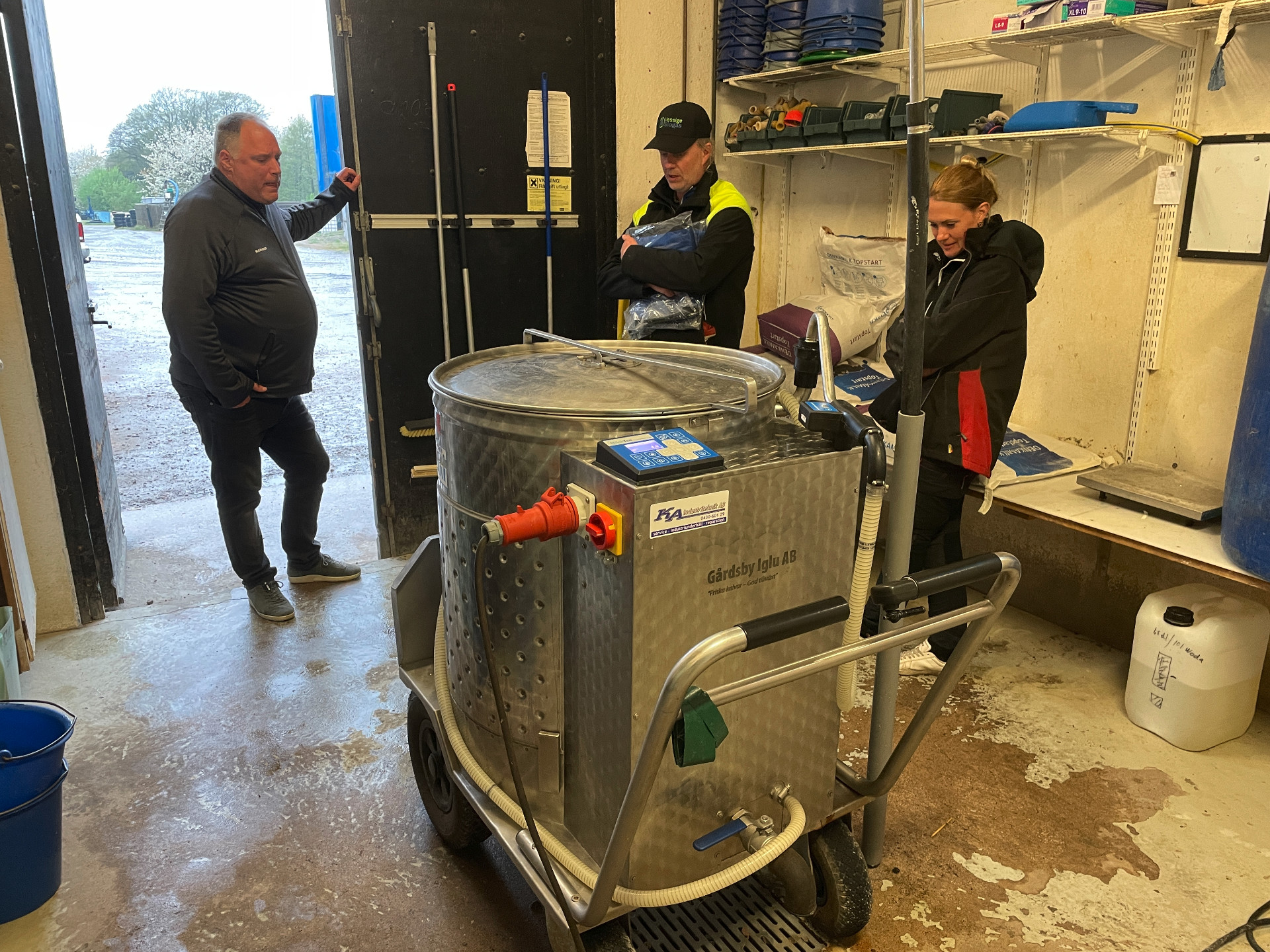
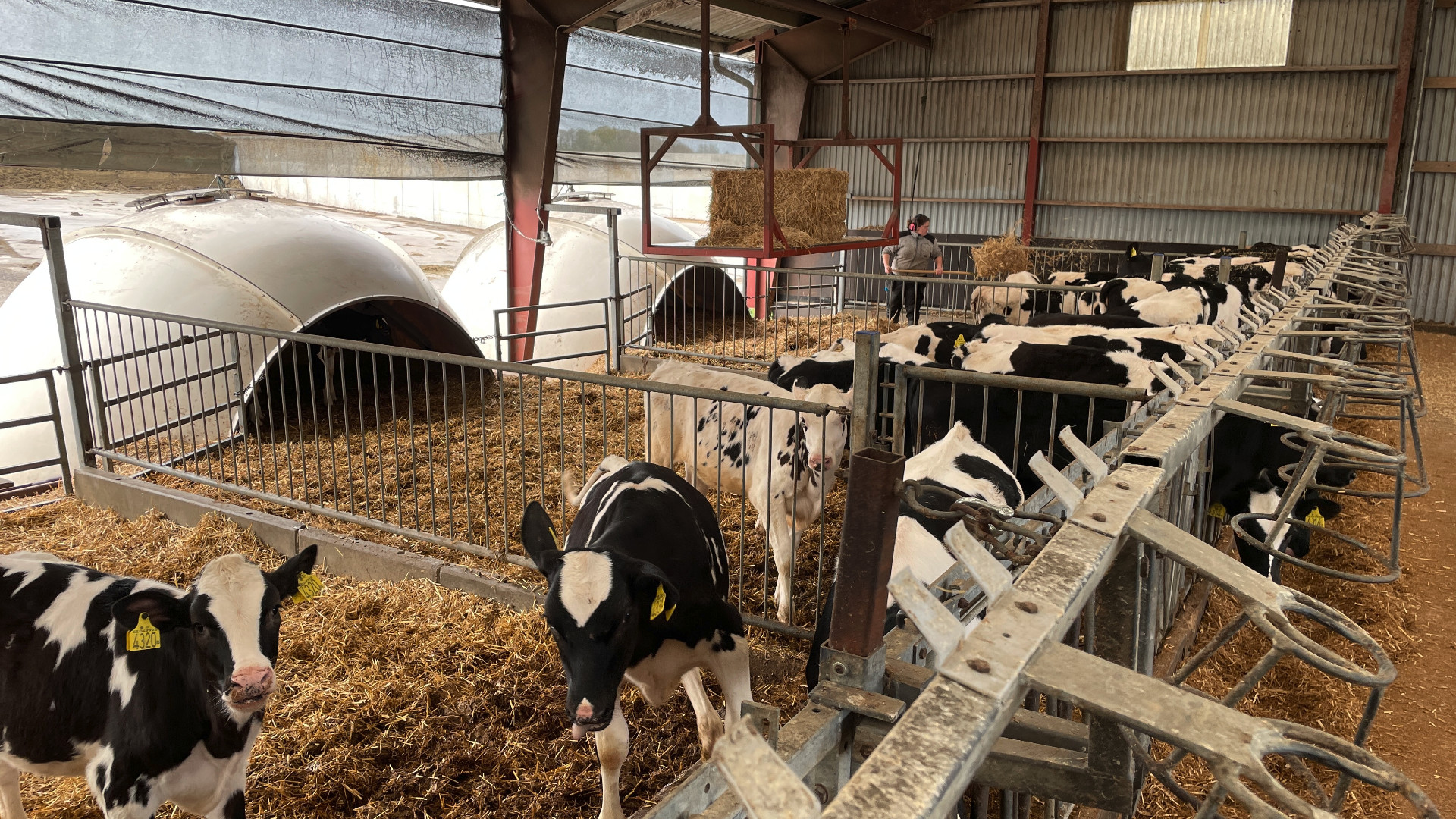
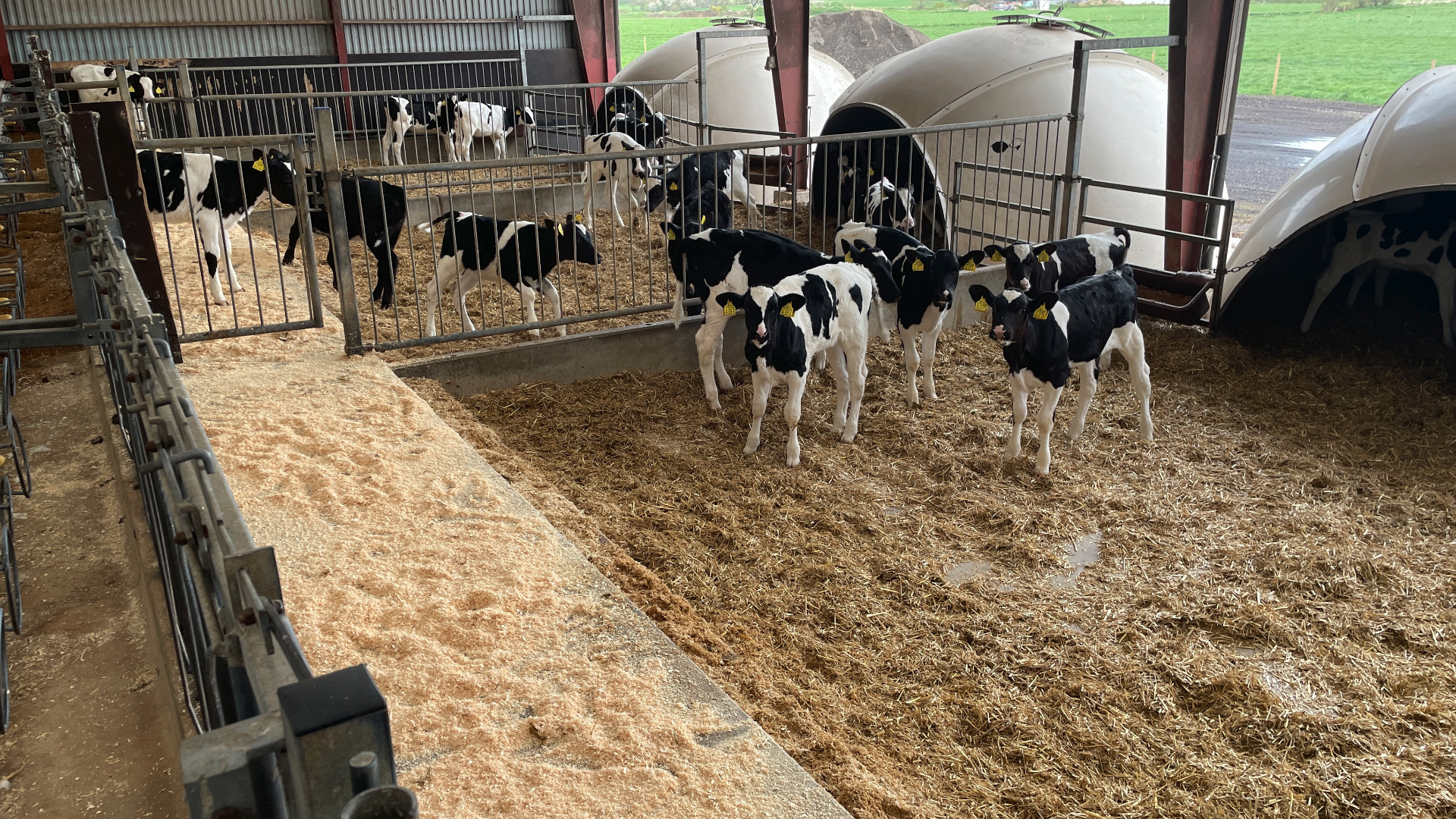
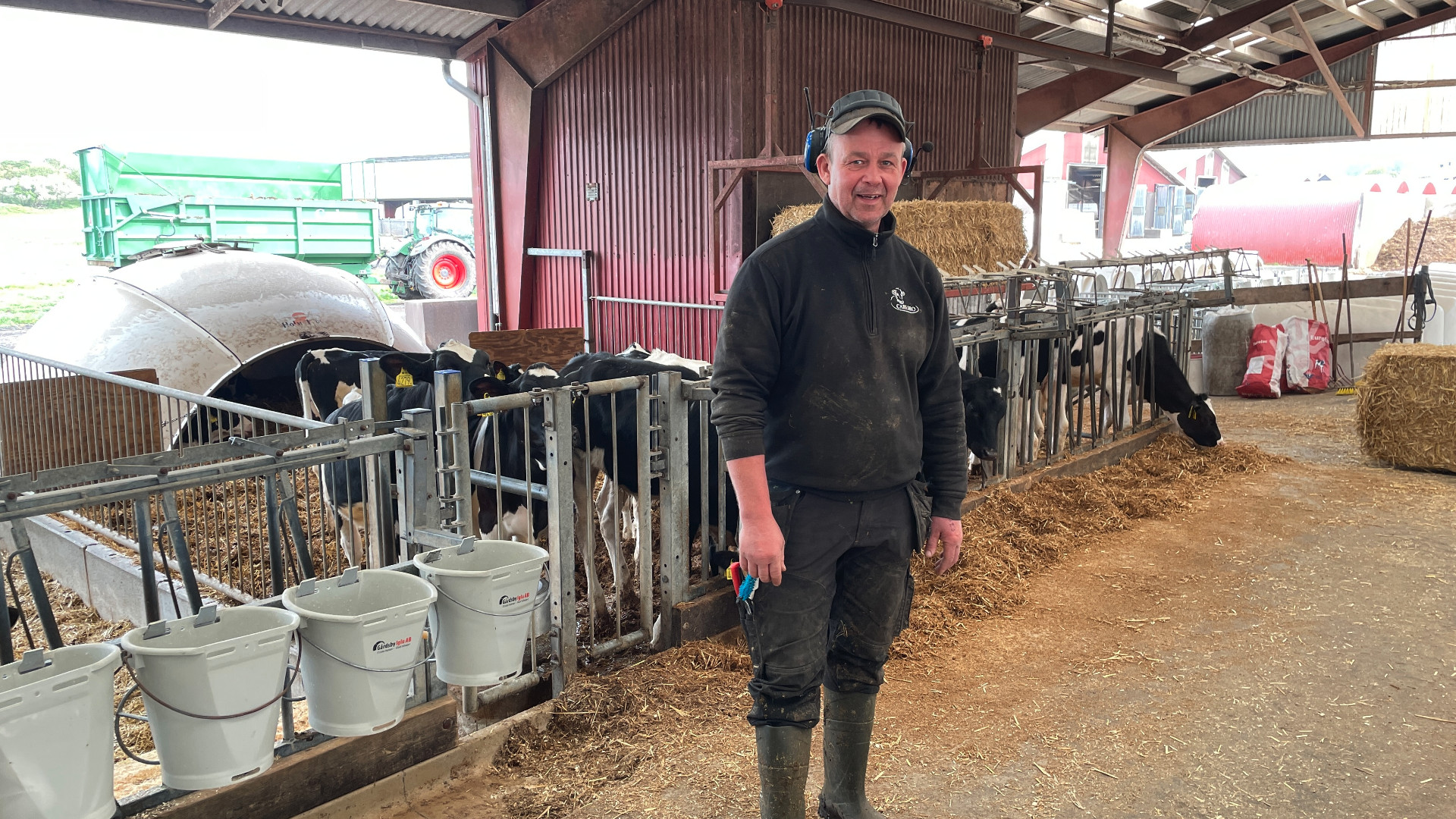 Magnus Karlsson
Magnus Karlsson